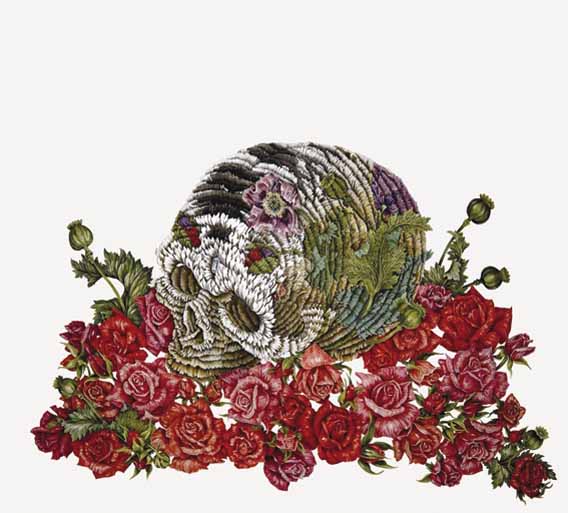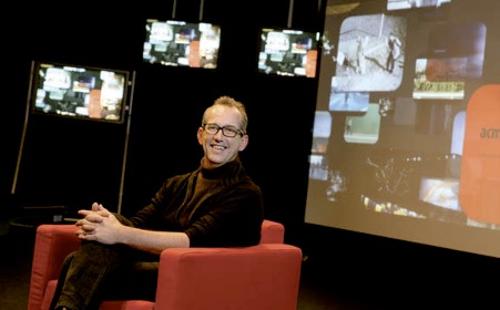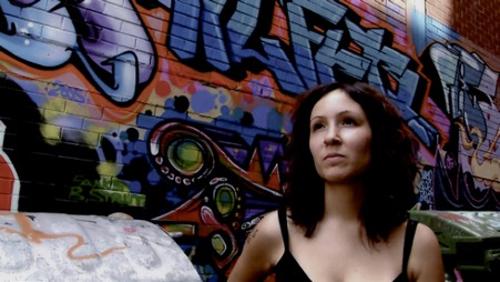
Snap Freeze is a sprawling survey exhibition of contemporary artists working with the genre of still life. The thirty-six artists were selected according to a handful of sub-categories of still life including vanitas, death, food, flowers and table arrangements. However, the historicising classification comes across as forced: many of the works do not sit neatly in such categories, and collectively the works are too disparate to read in such cohesive groupings. Instead, they operate detachedly from each other, competing for individual attention in the expansive architectural interior of Tarrawarra.
The exhibition is dominated by the medium of painting. Tim Maguire's ballooning, epic flower studies are technically dextrous but have an inescapable venality as does Elisabeth Kruger's Bunch, a mimetically painted cluster of grapes on the vine. These images concern themselves with spectacularity at the expense of a meaningful relationship with the subject. Similarly, Lewis Miller's paintings of cuts of meat, lamb chops and shanks arranged on plates and kitchen tiles, relish in their bravura brushwork.
More rewarding is eX de Medici's vegetal whimsy which recalls Arcimboldo in its irrepressible sense of organic growth. The symbolism of life in death and death in life is conveyed in a manner full of foreboding, absurdity and dark humour.
The most intriguing work is Tony Clark's (Hyacinth and) Crimson Chat; a painting that seems to meditate on its own representational limitations as much as depict its chosen objects. The whole image almost collapses into the play of paint.
Overall, many of the paintings iterate familiar ground, presenting routine refrains from the conventions of still life.
It's curious that the strongest works are ceramics: by Michael Doolan, Honor Freeman and Gwyn Hanssen Piggot. Is this because the material register of these works so closely correlates to the objecthood of still life? Michael Doolan's simplified cartoonish forms take as their ostensible subject the garden pot plant. The ceramic materiality of Flower and Pot Plant however is hidden by a chrome-like platinum lustre which makes the works seem like strange mechanical objects. Freeman's assortment of faux-Tupperware containers are slipcast in porcelain. Their matte opaque surfaces perfectly evoke the look of Tupperware. In a playful and elaborate composition, jars are stacked, bowls inverted, and a lid nestles inside its lunchbox. The work reclaims and restyles the humble functionality of kitchen storage with affection and savvy.
Jacky Redgate is also drawn to the realm of plastic storage but her contoured laminated photographs of container tubs and eskies are devoid of personal connection. The boxy plastic objects are flattened through the photographic lens into funky horizontal and vertical lines, reinscribing the work into the vernacular of geometric abstraction.
Which brings us to the central problem with Snap Freeze: the lack of correspondence between the works. Rather than expanding on a set of propositions, cumulatively the artworks play out a process of invalidation that means they ultimately detract from each other's presence. A tighter selection of artists and a stronger curatorial thrust may have filtered the genre through a perspective that attributed it with fresh and unexpected meanings.
In his brilliant essays on still life, Norman Bryson sees much of the meaning of individual works of still life coming from 'the inflections they are able to introduce into the field of previous work.' (Looking at the Overlooked: Four Essays on Still Life Painting, Norman Bryson, Reaktion Books, London, 1990) For too many of the works in Snap Freeze, this is precisely what is missing. To keep to the lexicon of table culture, Snap Freeze is a smorgasbord, but it's a visual array whose plenitude congests, rather than stimulates or satisfies.












